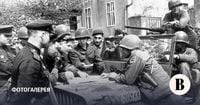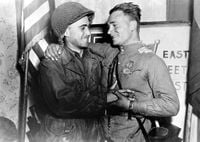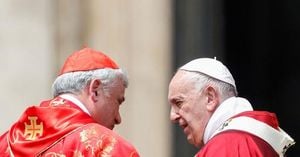On April 25, 1945, at 13:30 Moscow time, a historic meeting of Soviet and American troops occurred in the Torgau area on the Elbe River, symbolizing a significant moment in the alliance against Nazi Germany during World War II. Known as the "Meeting on the Elbe," this event marked the first time Soviet and American forces met, effectively dividing German military forces and bringing the collapse of Nazi Germany closer.
The meeting was not just a military milestone; it represented a high point in the allied relations of the anti-Hitler coalition. As Soviet troops approached Berlin, preparing for the final assault on the enemy capital, American, Canadian, and British forces were pushing through the Rhine, encircling German troops in the Ruhr. This dual advance was a critical strategy to weaken Nazi defenses on both fronts.
On April 21, General Dwight Eisenhower, the commander of the Allied expeditionary forces, proposed a meeting between the Soviet and American troops at the Elbe, a river that had been a significant military frontier since the Roman Empire. The atmosphere of mutual trust and shared purpose inspired the soldiers, leading to a historic handshake that would symbolize their cooperation.
As the two forces prepared for their encounter, precautions were taken to avoid friendly fire—a common concern during the war. Soldiers were instructed to use colored signal rockets to identify themselves; Soviet troops would fire red flares, while Americans would respond with green. This coordination was crucial to ensuring a peaceful meeting.
The first contact occurred when Lieutenant Albert Kotzebue and his infantrymen from the 69th Division patrolled the outskirts of the village of Leckwitz. They encountered Soviet soldier Aitkali Alibekov, marking the beginning of a new chapter in the war. At approximately 13:30, American troops launched boats to cross the Elbe, where they were greeted by a patrol from the 58th Guards Division, led by Guards Senior Lieutenant Grigory Goloborodko. The meeting was characterized by warmth and hospitality, with soldiers communicating in German due to the language barrier.
During this historic encounter, the American patrol, led by Lieutenant William Robertson, received information about American prisoners in Torgau. They shouted greetings, and a Russian soldier helped bridge the communication gap. The joy of the meeting was palpable, as soldiers from both sides celebrated their shared victory over a common foe.
The official ceremony of the meeting took place on April 26, 1945, attended by photographers, military correspondents, and even poets like Konstantin Simonov, who captured the moment for posterity. The event was marked by flags and banners proclaiming "East Meets West," emphasizing the unity of purpose in defeating Nazi Germany.
In recognition of this monumental occasion, Moscow saluted the soldiers of the 1st Ukrainian Front and the Allied Anglo-American forces with twenty-four artillery salvos from 324 guns. This display of military honor highlighted the significance of the meeting and the cooperation between the Soviet Union and its allies.
However, the cooperation was not without its complexities. The Western Allies had long promised to open a second front in Europe but delayed until 1944, when it became clear that the Soviet Union was winning the war independently. This delay was a source of tension, as the Soviet leadership, under Joseph Stalin, had consistently advocated for a quicker opening of the second front to alleviate pressure on Soviet forces.
Despite these political undercurrents, the meeting on the Elbe was a moment of triumph, symbolizing the united front against fascism. The atmosphere of mutual trust and common goals inspired the troops to push forward for a final victory. The meeting also served as a reminder of the sacrifices made by both sides, as they worked together to dismantle the Nazi regime.
As the war drew to a close, the significance of the Meeting on the Elbe continued to resonate. It was a vivid symbol of military brotherhood and cooperation during a time of unprecedented conflict. The legacy of this meeting is commemorated annually, with events held along the Elbe to honor the soldiers who fought for freedom.
Today, as we reflect on this pivotal moment in history, it is essential to recognize the lessons learned from the past. The unity displayed during the Meeting on the Elbe serves as a powerful reminder of the importance of collaboration in the face of adversity. It highlights the need for nations to come together to address common challenges, ensuring that the sacrifices of those who fought are not forgotten.
On this 80th anniversary of the Meeting on the Elbe, Russian Ambassador to Germany, Sergei Nechaev, plans to attend a memorial event in Torgau. While the German Foreign Ministry had previously recommended not inviting Russian officials to ceremonies related to World War II, Nechaev has expressed his intention to participate in the planned events, emphasizing the ongoing significance of this historical meeting.
However, representatives from the United States will not be present at the memorial event, reflecting the complexities of current international relations. The absence of U.S. officials underscores the challenges of navigating historical memory and contemporary political dynamics.
As we commemorate this historic meeting, it is crucial to acknowledge the diverse perspectives surrounding World War II and the ongoing discussions about its legacy. The Meeting on the Elbe serves as a reminder of the sacrifices made and the importance of unity in the pursuit of peace and understanding.






